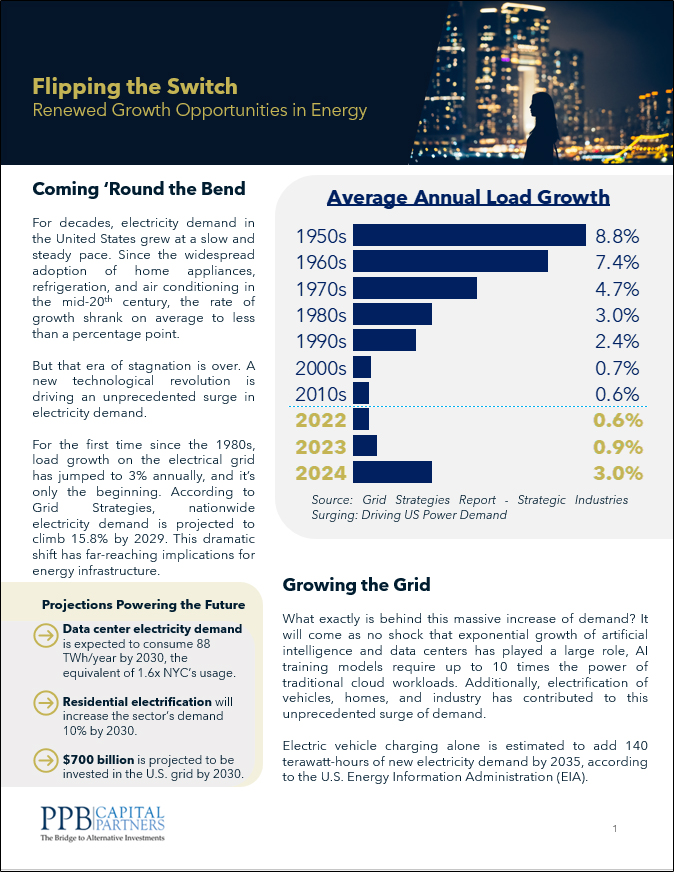
Opportunity Knocks
April 12, 2019

When the tax law changes were passed last year, many investors were excited about the implications of Opportunity Zone investments. As we wait for the final regulations to come out, there remain some questions that need to be addressed so investors can determine their best course of action.
As background, the OZ program was officially introduced in late 2017 with significant tax incentives to encourage investment in economically-distressed communities. State governors nominated the eligible tracts of land in their states. As a result, there are over 8,700 areas designated as Qualified Opportunity Zones (QOZ). The tax benefits are substantial as existing gains can be realized and reinvested in QOZ with a step-up in basis of up to 15%, while the taxes on the original gain are deferred until 2026. Most appealing, any incremental gains on the investment made within the QOZs are completely tax free.
Real estate investors are best positioned to take advantage of the legislation as currently written. This is because 50% of total gross revenue of the QOZ business must be earned within the QOZs to maintain the tax benefits. Therefore, real estate rental income is a natural fit. Many new real estate funds have launched over the past year to take advantage of the legislation and many of which are from first time fund managers (PPB Has tracked over 100).
This is where we emphasize the need for caution in evaluating the new fund options. Investment decisions should never be based strictly on tax advantages and each project must be evaluated on its’ own investment merit. The ultimate tax savings can substantially improve the net return investors will earn over a similar project outside of a QOZ. However, the current legislation can make for a challenging operating environment for the fund sponsors best positioned to develop properties.
Most established real estate developers look to exit their developments right at completion. However, the OZ legislation requires a hold period of ten years to maintain the tax-free status of the gains on the QOZ investments. Thus, developers who are not used to operating properties will be forced to either outsource this function, or take the operating responsibilities on their own. In addition, many of these new QOZ fund sponsors are managing a fund for the first time with no experience in this function. These additional responsibilities can distract the developer from their core competencies, and potentially eat away at the net gains.
The sourcing and acquisition process is of paramount importance to delivering a good outcome to investors. The areas of most interest are properties that were already entitled, or near entitlement, before the QOZ legislation was advanced. These areas were already going to be developed based on their own project merit. For this reason, many family offices have jumped into these single projects to take advantage of the QOZ tax advantages. Conversely, in our conversations with fund sponsors, investors have been rightly cautious before committing to pooled vehicles dedicated to QOZs as they wait for regulations to finalize. As a result, the larger fund sponsors have not had the same pool of capital to deploy into these “ready to go” projects. One can ponder the impact on acquisition values as these funds rush into new deals. The pressure will be on the larger funds to deploy capital quickly (regulation requires that the money be put to work within thirty months of acquisition) while dealing with potentially lengthy entitlement processes. Investors have reason to be leery of the larger funds without warehoused deals and too much of a blind pool. For that reason, PPB is focusing sourcing efforts on smaller funds with as much visibility as possible.
There will likely be a spike in investor interest once the final regulations are out that will address many of these unknowns. One area that needs to be clarified includes the tax ramifications of the potential recapitalization of the investments to enable liquidity to investors in advance of the 10-year hold requirement. We speculate that this will come out favorable to investors, as some source of liquidity is needed to pay the capital gain taxes due from the original 2026 deferral. In addition, some fund sponsors close to Treasury indicate that the final legislation will enable operators to sell properties (and maintain the tax benefits), as long as capital is redeployed into other QOZs. This would alleviate much of the operational burden on the developers, while leveraging sale proceeds to the social benefit of other QOZs areas or ancillary properties.
There are significant social and economic benefits of the QOZ program for both the communities involved and the underlying investors in the program. Investors have been understandably reluctant to allocate capital with so many unknowns around the tax ramifications. The ideal solution? A disciplined investment process and fund partners who deliver excellent returns, while providing tangible social benefits to the communities in which they invest.
For more information on Opportunity Zones or any alternative investment strategy, please contact me.
Sincerely,
Frank Burke, CFA, CAIA
Chief Investment Strategist, PPB Capital Partners
484.278.4017 Ext. 108
April 2019 article from The New York Times on the latest update in Opportunity Zone regulations can be found here.



